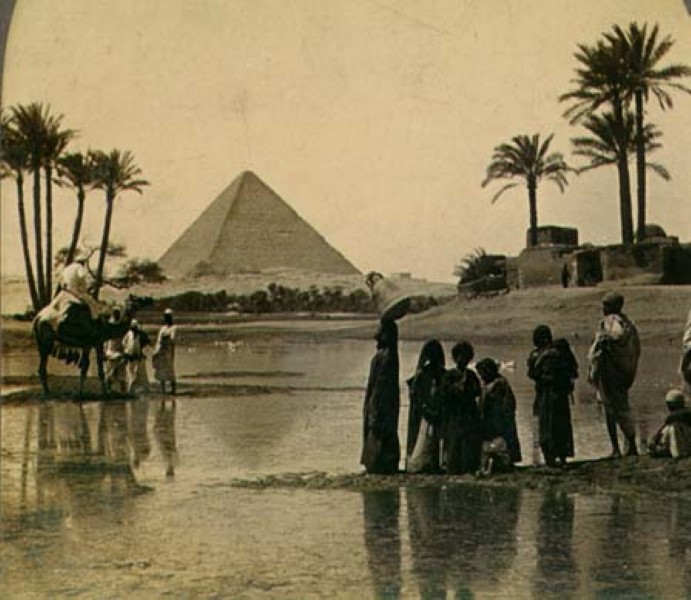An international team of scientists recently detected a new cavity in the 4000 year old Great Pyramid of Egypt! The detection method, muon tomography, is non-intrusive and so the discovery still awaits confirmation using more traditional techniques that involve (minimally invasive) drills and flashlights. But let’s first take a step back. What is this muon tomography thing anyway?
To take an X-ray of a human, you need a source (an X-ray machine), a medium (the human body), and a detector (a film, like a regular camera film, that is sensitive to X-rays). X-rays are high-energy particles that are sensitive to the density of what is in the medium – they can’t go through bone, but can go through flesh. As such, X-rays are used commonly to image possible fractures and other bone damage non-intrusively.
Muon tomography works similarly. Instead of a machine that generates X-rays, scientists use cosmic rays originating from space as the source, which naturally interact with the Earth’s upper atmosphere. This interaction between cosmic rays and the atmosphere creates new particles called pions, which are unstable, and they breakdown into muons. Muons rain down on the Earth surface at about 10,000 particles per meter-squared per minute.
As the muons travel through a solid substrate, they risk getting absorbed or scattered. How deep they can go in that solid substrate depends on the solid’s density. Suppose you put solid rock on top of a muon detector, and you put a porous rock (a rock with air cavities) on top of a second muon detector. The second detector will be measuring more muons in a specific interval of time compared to the first detector, because the muons traveling through air (in the cavities) are much less likely to get scattered or absorbed. That way, the number of muons that are detected by the detector can be used to calculate the density of the solid substrate. If you put two muon detectors separated by some distance under a rock, then you can use geometry to calculate the location of where a big void could be. And that is exactly what an international team lead by University of Nagoya scientist Kunihiro Morishawa did.

A Diagram of the Great Pyramid (Source: Wikimedia Commons)
The team placed two muon detectors in the Queen’s chamber in the Great Pyramid. The Queen’s chamber lies below the Grand Gallery and the King’s chamber. They also created a computer simulation of the muon particles going through the pyramid to predict what they should see, and compared that with what they actually saw. It is this comparison that established the existence of the new cavity. They left the muon detectors in the Queen’s chamber for over a hundred days, capturing several million muons. The muon “film”, contrary to a traditional camera, can capture data in three dimensions. It is composed of silver bromide particles in a gelatin matrix. When a muon penetrates the film, the silver bromide particles align themselves with the track left by the muon in the matrix, thus preserving a record of not only the muon itself, but also the direction it was traveling.
The simulations and experiments mostly agreed. The team was able to see the Grand Gallery and the King’s chamber in their data, but above the Grand Gallery is where the new cavity lies, and because the muon signal is as intense as the Gallery itself, the scientists suggest it is of similar dimensions — about 150 feet long, 28 feet wide, and 7 feet wide. Their finding was confirmed using two other muon detector technologies.
What did the ancient Egyptians do with this cavity? It is a mystery. It could be another burial chamber, but could also be structural, designed to release the Grand Gallery of the stress of huge amount of weight that lies above it. We just don’t know, but this opens up possibilities for a great TV documentary!
This is not the first time that muon tomography has been used in archaeology. That technology has been around for over 50 years. The nobel prize-winning physicist Luis Alvarez explored Khafre’s pyramid (the second largest pyramid of the Giza complex) using that technique in the 1960’s for hidden chambers with no success. Luis Alvarez is the father of geologist Walter Alvarez, who together discovered the iridium layer that proved that Earth suffered a devastating asteroid impact 65 million years ago. The environmental effects of that impact likely played a large role in the demise of the dinosaurs. We have a great deal to learn from stuff that falls from space, whether they are huge like asteroids, or harmless like muons. The challenge is always in finding ways to read the information they leave behind.


